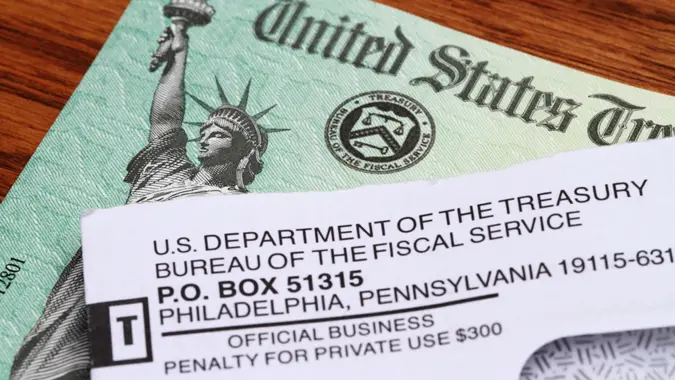I’m a Finance Expert: Here’s What Social Security Reform Should Look Like

Commitment to Our Readers
GOBankingRates' editorial team is committed to bringing you unbiased reviews and information. We use data-driven methodologies to evaluate financial products and services - our reviews and ratings are not influenced by advertisers. You can read more about our editorial guidelines and our products and services review methodology.

20 Years
Helping You Live Richer

Reviewed
by Experts

Trusted by
Millions of Readers
When Joe Biden was still president, he signed the Social Security Fairness Act, which eliminated the Government Pension Offset and Windfall Elimination Provision rules. Biden touted the bill as a way for Americans to retire with economic security and dignity after working hard for their entire lives.
However, the Social Security Fairness Act may not be as effective as it sounds. To learn more, GOBankingRates spoke with Kelly Gilbert, the owner and principal fiduciary advisor of EFG Financial. He helps clients navigate investing while educating themselves in areas of economics, personal finances and business finances. Here’s what he had to say about the Social Security Fairness Act and the future of Social Security.
Is the Social Security Fairness Act the Right Approach?
Gilbert didn’t mince words when discussing how the Social Security Fairness Act will harm the budget and create roadblocks in the future. “Government retirees will get overly generous Social Security benefits that no other senior citizens in the country are eligible for. And by doing so, it puts another $200 billion hole in an already failing Social Security budget.”
As it currently stands, the Social Security program will be unable to make full, on-time payments until 2033, according to the Social Security Administration’s 2024 annual report. When its reserves are depleted, it will continue to pay 79% of benefits.
Does COLA Keep Up With Inflation?
Another important discussion within Social Security reform is understanding how well the program adjusts to inflation. The cost-of-living adjustment (COLA) represents an annual boost in Social Security payouts to keep up with inflation. However, Gilbert expressed skepticism about how much COLA actually keeps up with inflation.
“The COLA calculation is also amendable by Congress, which enables them to calculate a COLA that is not in line with actual inflation,” Gilbert said.
In the history of Social Security, there have been three years with no COLA increase: 2009, 2010 and 2015.
As the program exists, there is an incentive to depress COLA’s rate relative to inflation. Social Security is already projected to experience significant financial issues in 2035, and a higher COLA only speeds up the process. Meanwhile, presenting an inaccurate COLA number minimizes additional costs to the program, though it may not be enough to keep retirees’ income on pace with inflation.
What Type of Reform Can Address Social Security’s Impending Insolvency?
Gilbert said the current bill moves Social Security’s solvency backward. He also explained how we got here and presented a solution that could strengthen the Social Security program’s financial situation.
“The damage was done in the 1980s, when Congress raided the Social Security accounts and replaced it with ‘I owe me’s’ Treasury bonds that pay an interest from tax dollar revenues,” he explained. “If they had invested like the railroad pension does, we would not be in this mess.”
His plan to fix it includes repealing the Social Security Fairness Act and not offering benefits to those who never paid into the system.
Currently, the Social Security Administration’s eligibility requirements include: working and paying into Social Security via taxes for at least 10 years; eligibility via a current or former spouse’s work and tax payments; or being under age 18, attending high school full time at age 18 or 19, or having a disability.
Gilbert added, “We must also change the investment procedures to match the railroad pension and let actual GDP growth help fund more benefits.”
Investing Social Security funds into assets could make the program more sustainable. It could also boost the stock market, as publicly traded corporations would receive additional capital. Dividend stocks, in particular, offer yields that would help provide Social Security payouts without requiring stock sales.
 Written by
Written by  Edited by
Edited by 
























